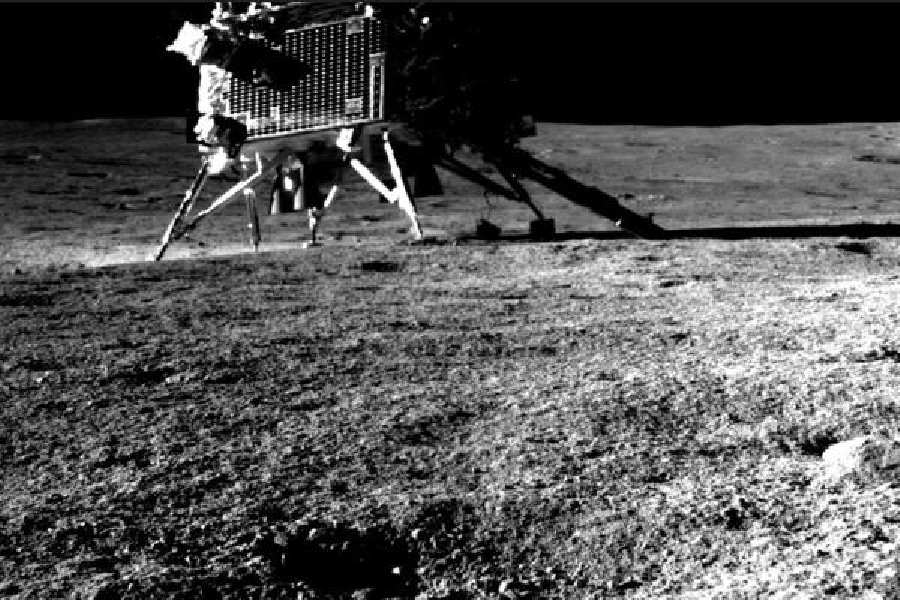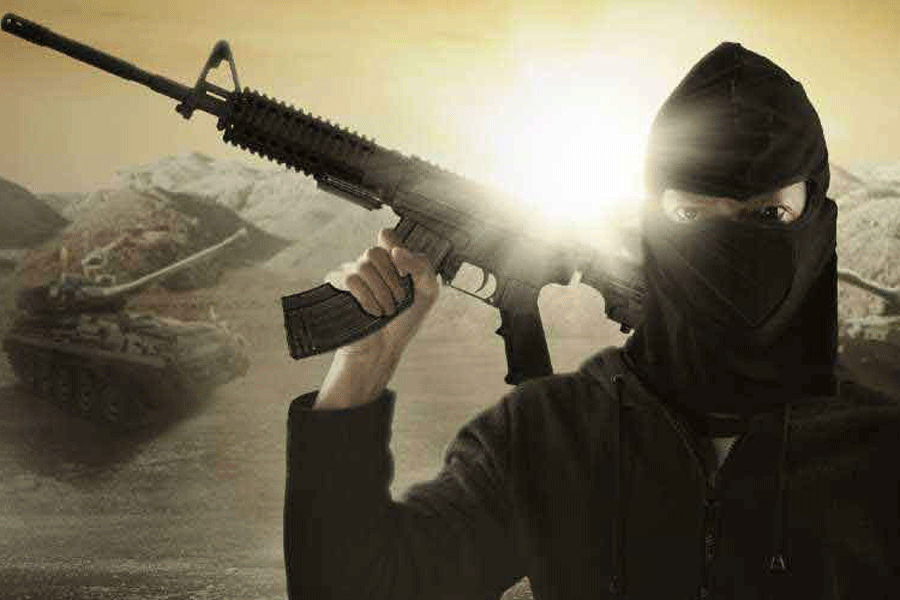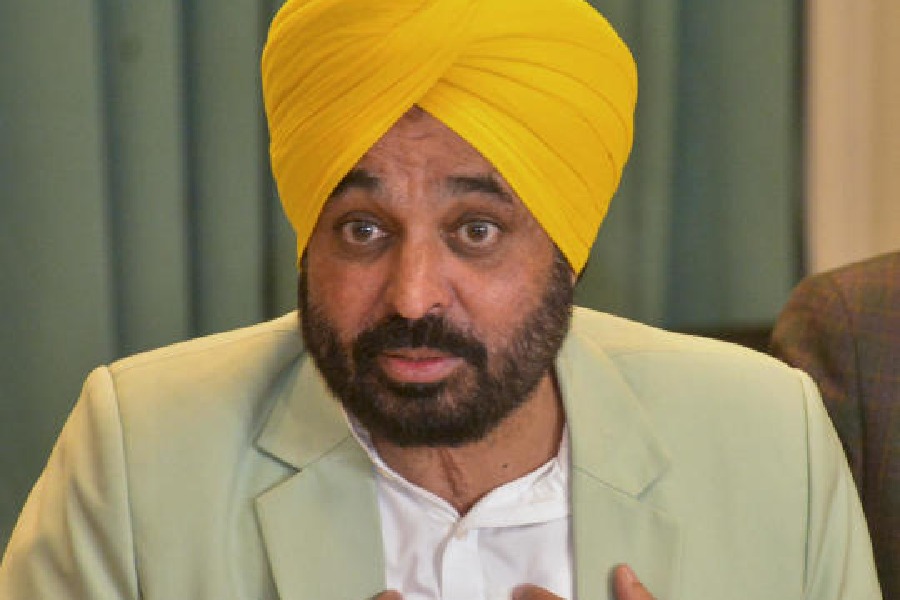That Rangakarmee succeeded in rolling out their festival, Samanway 9, even after being hit hard by the demise of their leading light, Usha Ganguly, in April 2020 and having to reschedule the event owing to an outbreak of Covid-19 among their ranks, is proof enough of the group’s grit and commitment. Hosted at Rangakarmee’s thoroughly refurbished studio theatre, the five-day festival was a generic showcase with puppetry and solo acts sharing stage with standard plays. Audience footfall was uneven, with some shows sparsely attended — for their next venture, Rangakarmeewould do well to tweak the time slots to be more audience-friendly.
Sarhadein, the home production directed by Niladree Bhattacharya, flagged off the festival with aplomb. Although evidently designed for a much larger stage, Sarhadein scored with the mainly young cast delivering a well-rehearsed, energetic performance, best exemplified by Kathakali Bhattacharya. However, Santanu Ghosh inexplicably adopted a mannerism-loaded mode of acting that clashed unpleasantly with the rest of the performance. The play is lit up with flashes of Usha Ganguly’s signature style, especially in the sequences of choric singing. The text critiqued State-sponsored jingoistic nationalism, but fell short of its promise by identifying the military as the fountainhead of the problem with the presence of the civilian government erased entirely. Taming of the Wild (Dolls’ Theatre), a puppet play infused with elements of modified Bunraku (a form of Japanese puppetry), was an audio-visual delight. The expert manipulation of the puppets (supported by wonderfully suggestive light and background music) conveyed a spectrum of emotions to completely rope in the audience. It was exhilarating to watch the director, Sudip Gupta, continuously expand the capacity of puppet plays to project delicate turns of thought and sensations.
Soma Mime Theatre’s Devi (directed by Soma Das), a performance that liberally borrowed elements from various styles of dance (but actually very little from mime), sought to trace the plight of women by moving along the rather-worn-out trajectory of myths and ancient literary texts to arrive at the present. Jadavpur Manthan’s Balai (directed by Anik Ghosh) had Rajib Bardhan interpreting, with feeling and a commendable lightness of touch, the character of the dreamy, ecologically sensitive adolescent boy of Rabindranath Tagore’s tale through a solo act. A length of hanging rope and a bed of dried leaves on the floor visually evoked a sense of fragility and mortality wrapped around the narrative, with the soulful strains of sarod underscoring the pensive mood.
Chetana presented Girgiti (directed by Sujan Mukherjee), an adaptation by Arun Mukhopadhyay of Chekov’s short story, The Chameleon (via Safdar Hashmi’s dramatization). Remaining true to their forte, the Chetana ensemble brought musicality to the foreground, with the characters frequently breaking into vigorous, infectious singing and dancing. Throughout, the keen edge of satire kept cutting through hypocrisies and falsehoods that underlie so much of our social interactions. Tarun Bhattacharya’s keen sense of comic timing and his practiced ease at slapstick had the audience in splits as he loudly tramped through his portrayal of the spineless, swindling constable. An utterly enjoyable watch, Girgiti was the perfect choice to bring the curtains down on this edition of Samanway with a flourish. The festival also witnessed performances like Mukti (Ananda Mahal South Garia), Panchkaan (Durgapur Bhimroti), Colors of Love (Alternative Living Theatre) and Safarnama (Janus).











